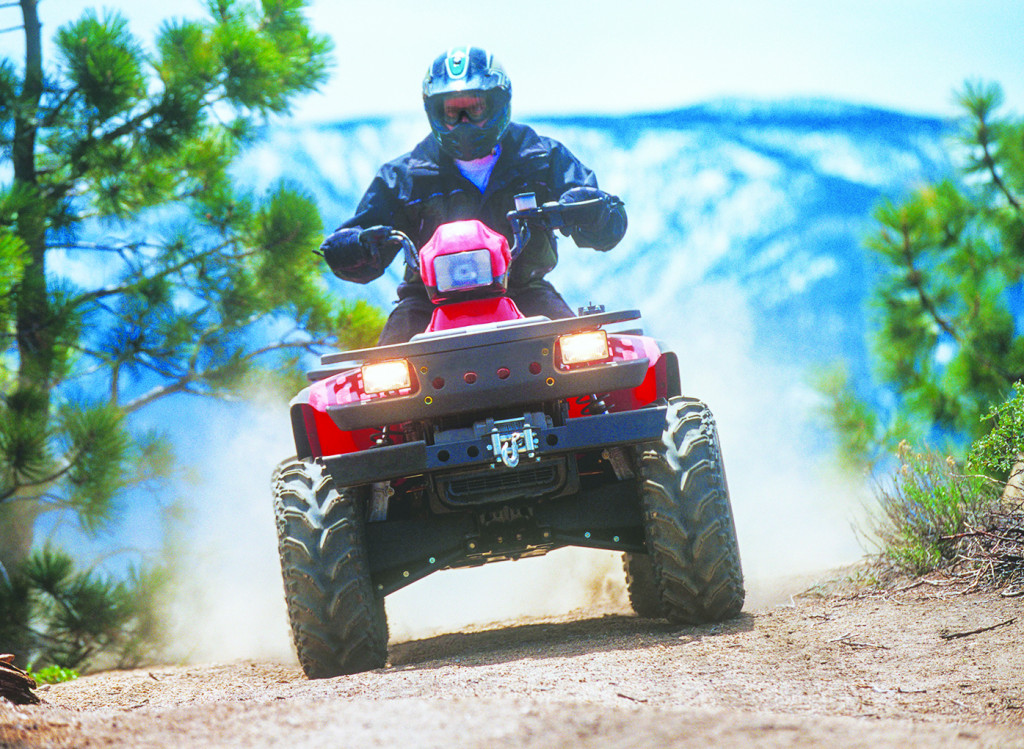Use OHVs properly; know the rules

The number of off-highway vehicles used during hunting seasons has been increasing steadily. While the vehicles can be useful tools to aid a hunt, some hunters are using them improperly and causing a variety of problems.
Hunters must be aware of Colorado OHV rules, local regulations and federal travel management regulations for national forests and BLM lands.
All OHVs must be registered in Colorado. Your home-state registration is not valid. To register your vehicle call Colorado Parks and Wildlife at 303-297-1192 or go to the website: cpw.state.co.us
Hunters need to remember that rifles carried on OHVs must be completely unloaded -- no bullets in the chamber or magazine -- and placed in a hard or soft case. Bows must also be carried in a case.
On national forest and BLM lands, OHV travel is allowed only on roads and trails designated for such use. Roads and trails open to motorized use will be signed as “open,” or be shown as open on forest service and BLM travel maps. It is recommended that you consult with the local forest service or BLM office before your trip to make sure you understand travel regulations in your hunting area. Federal fines, up to $500 per incident, may be levied for violations of travel management regulations.
Colorado Parks and Wildlife officers are authorized to write tickets for illegal OHV use. Besides the federal fines, violators who are using OHVs while hunting, fishing or trapping will be assessed penalty points against their license privileges: 10 points for most violations, 15 points for riding into wilderness areas. Hunters who accumulate 20 penalty points lose their ability to buy hunting or fishing licenses for at least one year.
Matt Thorpe, area wildlife manager in Durango, explained that hunters must minimize their use of OHVs if they expect to see any big game animals.
“There are some hunters who drive around on OHVs all day and then they complain that they’re not seeing any animals,” Thorpe said.
The constant drone of OHVs also causes problems for other hunters. OHVs are noisy and cause animals to move deep into inaccessible territory. Just one vehicle can cause problems for numerous hunters.
“There is getting to be a real backlash against OHVs from people who actually get out there and hunt the way they’re supposed to,” Thorpe said.
Big-game hunters who wish to be successful must walk slowly and quietly well away from roads. It is unlikely during hunting season that a hunter will see a big-game animal from the road. And if an animal is spotted, a hunter doesn’t have time to get off the vehicle, take a rifle or bow out of its case, load the weapon and move off the road to take a shot.
Besides disturbing animals and other hunters, improper use of OHVs can cause resource damage when they are driven off established roads and trails. That action can destroy vegetation, compact soil, and lead to stream and water-quality degradation.
Please, remember these rules and guidelines:
Rifles and bows carried on OHVs must be completely unloaded and secured in a case.
Be sure to check with local U.S. Forest Service and BLM offices for the local travel management plans in areas where you will be hunting.
In most areas, an OHV cannot be used to retrieve harvested animals. Check with local BLM and forest service offices for specific game-retrieval policies.
OHVs cannot be driven into designated wilderness areas.
Be careful not to trespass onto private roads.
Be considerate of other hunters. Drive slowly to reduce noise; minimize driving distances; don’t hunt from the road.
Explain these rules and guidelines to young hunters and those unfamiliar with proper OHV use.



